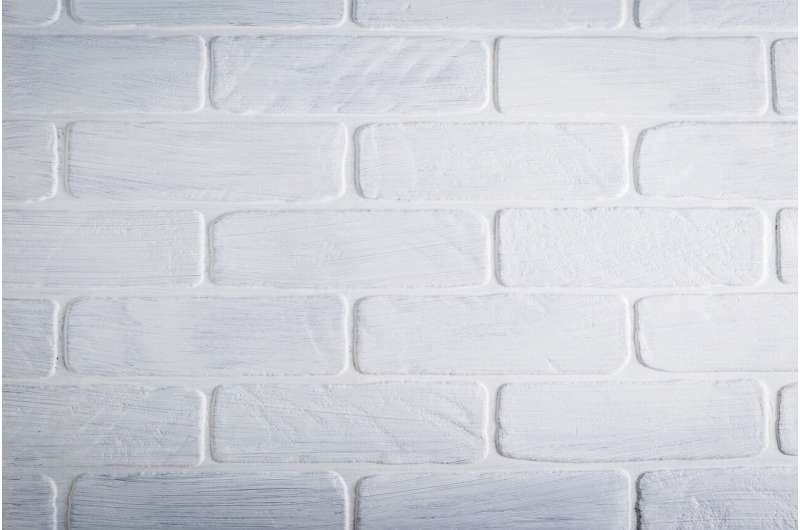This article has been reviewed according to Science X's editorial process and policies. Editors have highlighted the following attributes while ensuring the content's credibility:
fact-checked
reputable news agency
proofread
Q&A: How could new paint lower Sacramento air conditioning bills and fight climate change?

California is known for its warm weather, and Sacramento is no exception. With an average of 269 sunny days annually, the state's capital city has even been deemed the sunniest place on Earth for certain summer months.
But Sacramento's consistent summer heat isn't always beloved by residents. From high air conditioning bills during long stretches of triple-digit temperatures, to controversy over the safety of homeless residents living outside in the summer months, extreme heat conditions can be a public health risk—and they can be expensive to deal with.
A new kind of ultra-reflective white paint, developed by researchers at Purdue University, might pose a solution. It reflects just over 98% of sunlight, and has the potential to cool rooftops and asphalt and even help slow down the effects of climate change.
But for the average Sacramento resident, curious how this white paint could decrease their energy bill, or make a summer bus stop wait less sweltering, what might this new material mean?
Emily Barber, a doctoral candidate working on the white paint research at a Purdue lab, helped us answer a few of the questions you might have about the potential impact of this climate solution on your life.
If I painted my house with this paint, would my air conditioning bill go down?
As with anything, it's complicated—but Barber's short answer is that, yes, it certainly has the potential to do so. Using statistical modeling, the Purdue researchers estimated that their ultra-white paint could reduce air conditioning needs by as much as 40% in certain sunny regions.
The paint also, unlike air conditioners, doesn't need any electricity to work, which has the potential to decrease the amount of fossil fuels that are burned. And rather than pushing the heat from indoor spaces to outdoor ones, as air conditioners do, it uses radiation to reflect the heat waves all the way back into deep space.
What if I want to paint my roof a different color, but still want the cooling effect?
Good news! Purdue researchers have said that they are working on developing other colored paints that use the white paint as a base. They won't work quite as well as the ultra-white shade, but they will reflect more light than some of the commercial colors currently on the market.
What would happen to bus stops?
The area underneath the bus stop would likely be cooler. But Barber noted that the paint works due to its reflectivity, and therefore can only make a huge difference when there are sun rays. So clouds, humidity or anything else that blocked the sunlight would reduce the paint's ability to cool the area. However, the clouds themselves might provide shade that cools the area, making up for the loss in the paint-cooling effect.
What about during the winter, when we want buildings and bus stations to be warmer, not colder? Wouldn't this work against us?
Again, the paint's cooling effect works best when there is more sunlight, because it can only reflect light when there are sun rays is something to reflect. So, although overcast skies are difficult to study quantitatively, Barber said that "it is a known fact about radiative cooling surfaces that clouds make them less effective." So, a shelter or roof covered with white paint would be cooler during all seasons, but reduced light would make the difference in winter less than in the summer.
As far as energy bills, it is a trade-off: a lower air-conditioning bill during the summer, for a potentially higher heating bill during the winter. But according to multiple studies that have been done on the impact of radiative cooling coatings on energy costs, net energy savings in warm or moderate climates like that of Sacramento tend to be positive.
What will it cost?
Final determinations on pricing are still underway; but Barber said they are expecting the cost of the paint to be similar to what's on the market now, "if not cheaper."
Currently, the market price for a gallon of good-quality paint is around $30-$50, although the price of reflective paints on the market varies.
Could this cool the whole city down?
One of the major factors that contributes to the heat island effect, a phenomenon where paved surfaces and dark-colored roofs trap the sun's heat, is a city's albedo, or solar reflectance. Dark, impermeable surfaces have low albedo, absorbing heat. So if this factor were addressed via white paint, at the same time other major factors like percentage of greenery and building height were tackled, there is a good chance that the average temperature in the city would go down at least a couple of percentages.
2023 The Sacramento Bee.
Distributed by Tribune Content Agency, LLC.





















